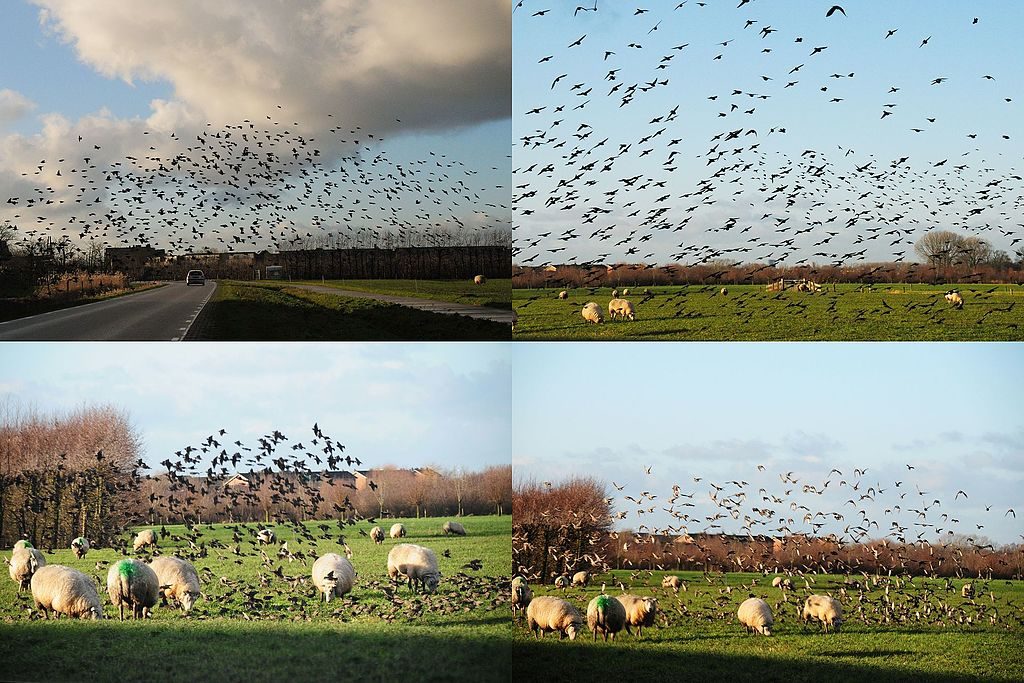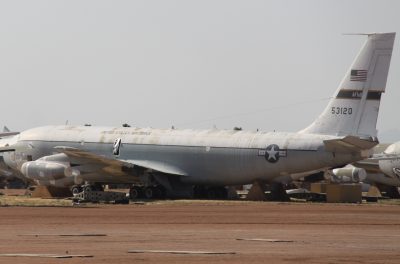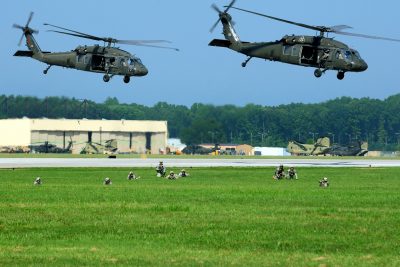
In my previous blog, I explained the ins and outs of a bird strike (see: https://doctoraviation.com/bird-strikes-and-the-oklahoma-city-thunder/ ) At the end of that blog I alluded to a flying story where I set a “record” for bird strikes. It went down as follows.
It was a beautiful early Fall afternoon – sunny and about 75 degrees. It was a routine mission for pilot proficiency. We departed from Wright Patterson AFB enroute to Fort Campbell, KY, home of the 101st Airborne and many Black Hawk helicopters.

At the time I was in the 4950th Test Wing. I was in the left seat of the NKC-135 ARIA (Advance Range Instrumentation Aircraft). One of these jets can now be viewed at the Air Force Museum at Wright Patterson. In the right seat was a very capable pilot named Eddie. Eddie was a test pilot who had come to the unit the previous year or two from Edwards AFB. Eddie was a good pilot and a good training companion on this “routine” mission.
I don’t remember the Flight Engineer’s name, but I can still see his face – he, like all the flight crew members in this unit was very competent. I don’t make that statement in a boastful way; it was simply the result of the process. One did not get into the 4950th Test Wing as a “newbie”. Aviators were selected from other flying units through an application and vetting process. One had to have an established record and be recommended by someone already in the unit. I myself had been flying the ARIA for a little over two years.

Normally we would be involved in some sort of testing or telemetry gathering mission. Either for Air Material Command or working in conjunction with NASA helping to track a rocket launch. However, today we were headed down to practice some touch and go’s at Ft. Campbell. Touch and go’s improve pilot proficiency; Ft. Campbell was a lightly trafficked airstrip, making it idea for maximizing our training time.
Touch and go’s are when an aircraft comes in for a landing, but instead of performing a full stop, the airplane touches down, gets all the landing gear on the runway and then pushes up the power and takeoffs off again. In this manner a pilot can practice numerous takeoff and landings in minimum time. Pilots generally enjoyed these exercises as they demand some of your best flying skill and the challenge of landing precisely on center line, in a beautiful flare at an airspeed just above stall, totally exhilarating. In short, it is a lot of fun.
This day, thus far, did not disappoint — Sunny skies, calm winds all the way down. Beautiful deciduous trees lined horse pastures and meadows. The bluegrass in Kentucky exhibited its full glory that sunny afternoon.
After several touch and go’s, alternating between Eddie and myself, I was to take the last one and we would head back. That is when the drama began.
In the 135, like every aircraft, there is a decision point where a pilot decides to abort the takeoff or continue the takeoff. In the 135 we had a procedure, “Stand em up, push em up”. Translation: we landed on the touch and go at idle power (the throttles were all the way back as far as they could go). Once we settled all the gear on the runway, we would push the four throttles forward until they were perpendicular to the runway (= “stand em up”). The Fight Engineer would then scan the gauges, if all engines were burning normally, he would call, “push em up”. That was the signal to move the four throttles forward to the takeoff power setting.
Once we “pushed em up”, we were committed for takeoff.
On the last touch and go, I had a beauty. Just a fraction to the left of centerline. On touchdown speed. I settled the nose gear to the pavement. “Stand em up”, was the call. The four throttles were advanced. The engines looked good. “Push em up” was followed by my right hand smoothly, but surely, advancing the four throttles.
After a quick check of the engine gauges, my eyes moved upward and out the windscreen, fixed to the end of the runway. That is when my stomach fell.
Little black specks littered the end of the runway.
The black specks were one of my worst fears.
A flock of birds.

I don’t know if they were sparrows or swallows, but I know there were a lot of them.
I had pushed em up; I was committed to the takeoff.
“Please Lord, don’t let those birds hit my engines”, I silently prayed.
As I rolled toward them, they rose from their nesting/resting position.
I began to pull back on the stick to rotate heavenward on takeoff.
They simultaneously rose heavenward.
Thud, Thud, splat, splat, was all I heard.
I prayed that the engines would keep turning. Trees lie right below my plane. I did not want to “land” in them with a powerless airplane.
The engines kept turning, I kept praying, the plane kept rising. The splattering sounds stopped.
We reached pattern altitude and thoroughly scanned the engine gauges. Readings indicated normal. I checked over my left shoulder to the left wing. Eddie checked the right wing. We sent to Flight Engineer back to scan the top of the wings out the small windows located on the doors over those thick wings.
When we got on the ground, maintenance met us. Before we could get out of the cockpit they were all over the plane like ants on a picnic blanket. They began to count, “one, two, three..” the blood stains from the strikes were all over, “nine, ten, eleven” they were on the nose of the aircraft, “fourteen, fifteen, sixteen” the rudder, “eighteen, nineteen” the leading edge of the wings and the engine inlets, “…twenty one”
“I count at least twenty one, sir”, the crew chief reported.
Eddie and I looked at each other in disbelief. A bird strike totally 21 confirmed and the engines kept turning. Thankfully, they were smaller birds, yet I was not taking that for granted. I closed my eyes and prayed a prayer of thanks. It could have ended much worse. As it turned out, it was the best ending we could hope for.

I left the unit a short time later to pursue my masters education enroute to the Air Force Academy. As is customary, the flying unit gave me a picture of the NKC-135 upon my departure with a wide matte around the photo — Area enough for autographs and well wishes to be expressed by my fellow aviators. I can often see the picture from where I type. Right in the middle is Eddie’s salutation.
“Daryl, you bird slayer! 21 + a new world record!”
He signed it with his name and then, “AKA Bird Man from Alcatraz”. I guess it may have been a record for the 4950th. A record I have no desire to top and am thankful that I survived. Thank you Lord!
